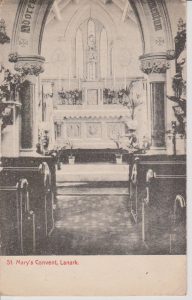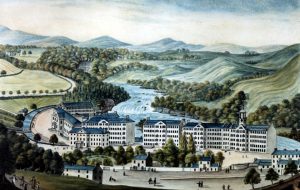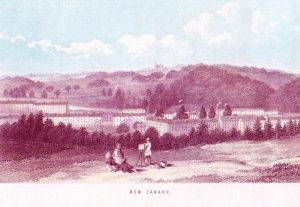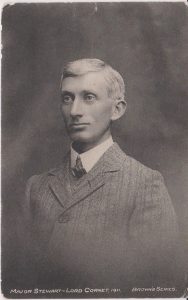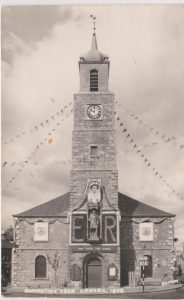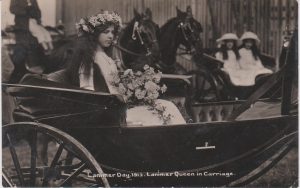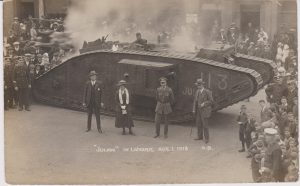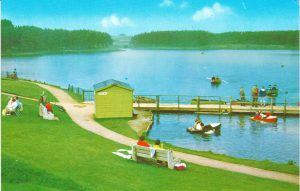Lanark
William Wallace murdered Haselrigg, the English Sheriff of Lanark at the town’s Castle in May 1297. The reason for this act is the subject of dispute. Regardless of why, this single act set Wallace on the path to his destiny; it brought him the support of much of the population, and galvanised ordinary Scots to rally to his flag.
Lanark’s name comes from its woollen industry (from the Norman French, the modern ‘laine’, meaning wool, is related to it); indeed Edward I’s tax on wool in 1296 (to finance a campaign in Flanders) inflamed local opinion and garnered Wallace much local support. The town had a Greyfriars monastery, founded at the time of Robert the Bruce, it was located between Broomgate and Friars Lane. The site of a house reputed to have belonged to Wallace lies opposite the church of St Nicholas at the west end of the High Street (above the door of which a statue of Wallace was placed in the early 19th Century).
An interesting remnant of the period can be found in the rear of one of the properties in the High Street, from Bernards Wynd a 13th Century gothic window can be seen; this was from a stone-built house, probably owned by the monks of Dryburgh (being the best house in the Town, it is likely that Wallace resided there after his defeat of the English forces at Stirling Bridge). In the grounds of Lanark’s old cemetery are the remains of the original St Kentigern’s Church, the south wall and chancel arch are from Wallace’s time.
Narrow by year:
Narrow by tags:
St. Mary’s Convent
postcardThis is an old card of St. Mary’s Church, Lanark, which was constructed to the design of Weightman, Hatfield, and Goldie. The construction took place between 1856-1859 as a result…
New Lanark by Winning
postcardA view of New Lanark completed around 1818 by a man called Winning. He created several prints of New Lanark when all the main buildings had been constructed.
Lithograph Illustration of New Lanark
postcardThis is a lithograph illustration of New Lanark from William Cowan’s history of Lanark from 1865.
Workers from New Lanark
postcardHere are some of the workers from New Lanark in the 1890s. This would be the early days of the Gourock Ropework Company. They took over New Lanark in 1881.…
Major Stewart, Lord Cornet
postcardPostcard picturing Major Stewart, Lord Cornet of Lanark Lanimers in 1911. A Brown’s Series postcard.
St. Mary’s Hospital
postcardSt. Mary’s Hospital, Lanark, was lined up to take casualties from the Lanark Aviation Meeting. Fortunately, there were no fatalities and the worst accident was a broken leg. This was…
Coronation Year
postcardA postcard showing the celebrations of Coronation Day in Lanark. Queen Elizabeth II was crowned on 2 June, 1953 in Westminster Abbey.
Lanimer Day
postcardA postcard from 1913 of Lanark Lanimer Day, showing the Lanimer Queen in a horse-drawn carriage.
World War 1 Tank in Lanark
postcardA postcard showing “Julian” – a World War 1 tank. Taken in Lanark in August 1918. “Julian” was one of a number of tanks used by the British Government to…
Lanark Loch
postcardA colourful postcard of Lanark Loch showing paddle boats and rowing boats for the more adventurous.

